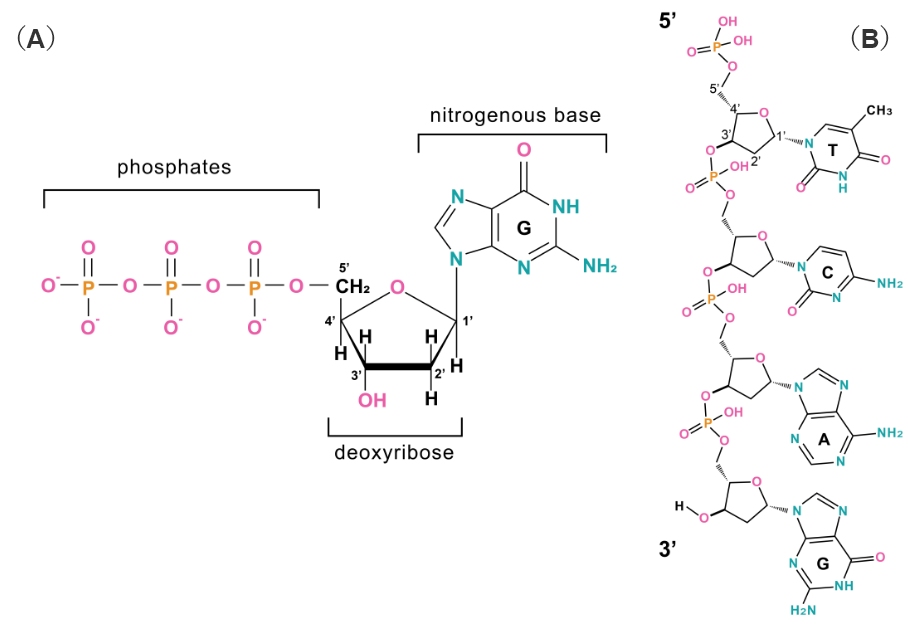相關(guān)服務(wù)
載體構(gòu)建質(zhì)粒DNA制備
病毒包裝服務(wù)
mRNA基因遞送解決方案
CRISPR基因編輯解決方案
shRNA基因敲低解決方案

Type or paste your DNA sequence below and automatically retrieve the reverse, complement, or reverse complement sequence. The reverse complement allows you to maintain 5’ to 3’ orientation.
DNA carries the genetic code for all cells and is made up of four nucleotide bases: adenine (A), cytosine (C), guanine (G), and thymine (T). Each of the nucleotides is composed of a sugar (deoxyribose) attached to a phosphate group and a nitrogenous base. The nucleotides create a long string by forming bonds between the phosphate group of one nucleotide and a carbon in the sugar of another nucleotide. Because of the orientation of the nucleotides, a phosphate on one side and a nitrogenous base on the other, there is a 5’ end and a 3’ end of the nucleotide and therefore the strand (Figure 1).
For each strand, the cell contains a complementary strand, which provides a Watson-Crick pair for each nucleotide base. Adenine forms hydrogen bonds with thymine, and cytosine forms hydrogen bonds with guanine, so the complementary sequence for ACTG is TGAC. The two complementary strands with hydrogen bonds between each nucleotide form a secondary structure, the double helix (Figure 2).

Figure 1. Nucleotide structure (A) and binding pattern between nucleotides (B).

Figure 2. Strands of nucleotides form hydrogen bonds to create a double helix.
Each of these strands may contain coding and regulatory regions. However, when looking at the two strands of DNA, it is important to note their orientation. The complementary strands are laid in opposite directions. So, from top to bottom, one of the strands in the figure above is 5’ to 3’ and the other is 3’ to 5’. However, DNA is always read from 5’ or 3’.
Because of the complexity of complementarity and reversed directions of the strands, it can be useful to note not only a given DNA sequence, but also all of the ways that it can be read: the sequence, the reverse sequence, the complement, and the reverse complement (Figure 3). All of these give different perspectives of how the sequence can be recognized, so can help to optimize experimental design.

Figure 3. Based on 5’ to 3’ order of a query sequence, the DNA strand can be read to produce the reverse, complement, or reverse complement sequence.

